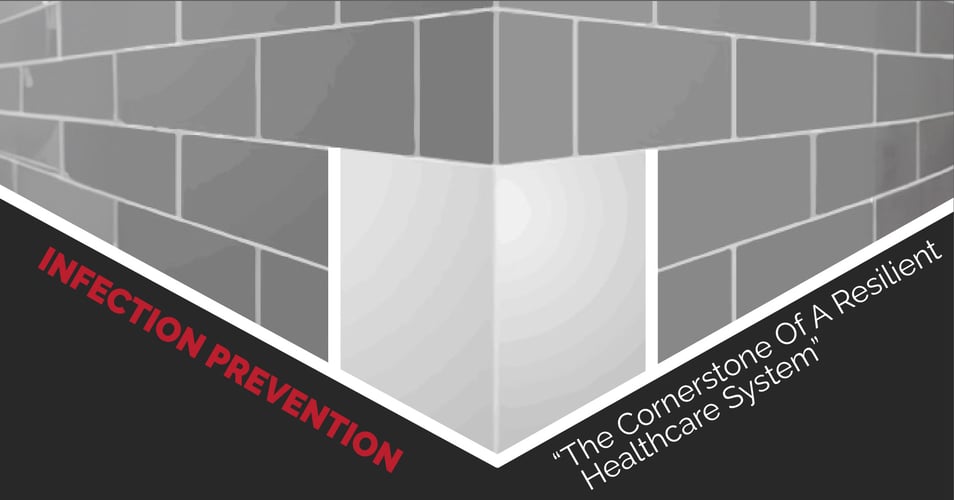A New Category of Clean: Preventive Biocidal Surfaces

Sometimes a product comes along that breaks the paradigm. It is so innovative and unexpected that attempts to fit it into an existing market category are impossible. When that happens, a new category must be created to accommodate the new technology. This is the case with surfaces that actively kill bacteria*. They're not a cleanser, per se. They're not really a device, either. What are they? Enter Preventive|Biocidal SurfacesTM.
The HAI Treatment and Prevention Market, Expanded
All healthcare products available to consumers fall into a market segment (just as Coke and Gatorade fall into the beverage market, and then further into the soda and sports drink markets). The HAI treatment and prevention market includes pharmaceuticals, medical devices, and environmental products. Each of these categories are also further segmented.
![]()
Pharmaceuticals to prevent or treat infections include antibiotic, antiviral, and antifungal medicines. Devices designed to reduce the chance of contracting an HAI include catheters and patient ventilation systems. Finally, environmental treatment products currently include only punctate cleaning products - products that reduce the presence of organisms during use but must be used over and over again to keep something clean since recontamination begins immediately. These include cleansers used by environmental services staff and portable UV or misting machines. But where do you put a surface that actively kills harmful bacteria* like a cleanser, but does so continuously, even after recontamination? Something unlike any environmental product previously used in the fight against HAIs?
![]()
A surface that kills disease-causing bacteria*
Environmental products have always been limited by one thing: They don't keep cleaning after they are used. If you wipe off a counter with a disinfecting wipe, you remove contaminants present on that surface at that time. But what about contaminants that fall on it in the hours before you can wipe it again? They remain there - and reproduce. UV robots and hydrogen peroxide misters are also great at killing germs while they are used. But they can only be used when the room is empty (and in some cases, completely sealed), and like other environmental products, once their beam or mist is turned off, germs are free to collect and reproduce on all room surfaces until the next time the room is cleaned, often 12-24 hours later.(Our post on winter weather as an analogy for this recontamination expalins in more detail.)
This limitation is shattered by Preventive | Biocidal SurfacesTM. These materials - and to date, only two products meet the criteria - actively kill 99.9% of harmful bacteria* in under 2 hours, even after recontamination. These surfaces are EPA registered for Public Health claims and destroy bacteria* 24 hours a day, simply by being installed. Both harness the natural biocidal capabilities of copper. The first product is just that: raw copper alloy metal sheets formed into surfaces that kill bacteria*. The second product, EOSCU, is the only synthetic polymer infused with cuprous oxide (copper in its fully oxidized state) and looks and fabricates like any solid surface. This material can be fabricated into counters, walls, floors, sinks, bed rails, chair arms, and many other molded surfaces.
Occassionally a new product comes along that is disruptive. It changes the landscape. Still rarer are those innovations that create "blue oceans" by defining new markets. These products answer a need previously unresolved. Click here to see how Preventive | Biocidal SurfacesTM have expanded the HAI treatment and prevention market.
Editor's Note: This post was originally published in May 2015 and has been updated for freshness, accuracy and comprehensiveness.
*Testing demonstrates effective antibacterial activity against Staphylococcus aureus (ATCC 6538), Enterobacter aerogenes (ATCC 13048), Methicillin-resistant Staphylococcus aureus (MRSA-ATCC 33592), Escherichia coli O157:H7 (ATCC 35150) and Pseudomonas aeruginosa (ATCC 15442).
![EOScu Logo - Dark - Outlined [07182023]-01](https://blog.eoscu.com/hubfs/Eoscu_June2024/Images/EOScu%20Logo%20-%20Dark%20-%20Outlined%20%5B07182023%5D-01.svg)

![[infographic] Antimicrobial Market Segmentation Download and share!](https://no-cache.hubspot.com/cta/default/216314/interactive-178566399573.png)



